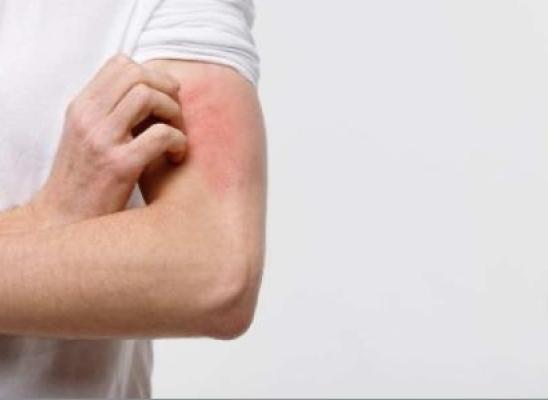What Skin Picking Looks Like in Kids and Teens – And When to Seek Help

Online test
Find out the severity of your symptoms with this free online test
Kids, like grownups, can have all kinds of little quirks and habits like hair twirling, finger tapping, or nibbling at a bothersome hang nail. They might occasionally pick at a scab or pimple a little much. Most of the time, it’s more annoying than harmful. Sometimes though, picking at their skin becomes frequent, intense, and hard to control. At that point, it might be just a fleeting behavior. It might be a sign of a mental health condition called excoriation disorder, commonly known as skin picking disorder.
Skin picking disorder is a body-focused repetitive behavior (BFRB) characterized by repeated picking at the skin that results in physical damage to the skin, significant emotional distress, and disruption of daily life. It usually emerges in early adolescence but it can affect younger children too. The urge to pick can feel overwhelming and resisting it can be extremely difficult.
It isn’t always easy to know what’s passing behavior, and when it’s something more. And, to complicate things, skin picking can look a little different in kids and teens than it does in adults.
Here’s what you need to know about skin picking in kids and teens and signs that it might be time to seek help.
Why Do Kids and Teens Pick Their Skin?
Skin picking can be triggered for different reasons. Some of the most common triggers include:
- Stress and anxiety – One of the most commonly reported triggers, picking may give temporary relief to feelings of stress or overwhelm.
- Boredom – The brain is constantly seeking novel stimulation and boredom is a commonly reported trigger to picking. Kids may pick when they’re bored or in need of sensory stimulation.
- Perfectionism – Perfectionism is a powerful driver of skin picking. Teens can be particularly susceptible to the pressure to look “just right” and try to correct perceived imperfections.
- Sensory Processing – Anecdotal and scientific evidence suggests that skin picking may be related to issues with sensory processing such as sensory over responsivity.
Understanding why your child picks their skin isn’t always clear and they don’t always “why” either. They just know that they just “have to” pick.
What Does Skin Picking Look Like In Kids and Teens?
Early signs of skin picking can be rather subtle. Here are some signs to look for:
- Excessive picking at blemishes – Of course, most teens will pick at their blemishes now and then. It’s hard not to. But excessive picking, attempts to “smooth” blemishes or creating open wounds might signal something more. They may start out hoping to “fix” their skin but end up making it worse.
- Repeatedly peeling scabs – Yes, scabs, especially as they dry, can be tempting to peel. But repeatedly removing scabs before they heal or creating more skin damage can be a subtle indicator of something more.
- Long periods of picking – They may spend excessive amounts of time picking, sometimes not even realizing how much time has passed. They may experience episodes where they seem to “zone out” and not even realize they’ve picked until they see the damage.
- Covering up – Some kids wear start wearing long sleeves or heavy makeup to try and hide their skin, even in hot weather.
- Avoiding activities – Avoidance is a common impact of skin picking. You may find your child or teen suddenly avoiding school or social events or skipping sports because they feel embarrassed about their skin.
- Emotional distress – Your child may seem more emotional or more withdrawn. Depending on their age, they may not express themselves as an older teen or adult might.
If you’re seeing concerning behaviors, talk to your child or teen. Giving them a safe space to talk about their experience without judgment can be an important first step to healing.
When to Seek Help
Sometimes, loving support isn’t enough. Skin picking can have profound impacts on one’s well-being and professional help is often needed to find healing. You know your child better than anyone. If you’re concerned, it might be time to talk with your family’s healthcare provider. They can help guide you to specially trained professionals who can help.
Signs that your child could benefit from professional help include:
- Skin picking interferes with your child’s daily functioning, social relationships, or academic performance.
- Severe skin damage or signs of skin infection (may need medical intervention too)
- Your child is expressing feelings of helplessness or hopelessness about controlling their behavior.
Finding A Therapist
Therapy is the first-line treatment for skin picking disorder. A licensed mental health professional can assess your child’s behavior and develop a plan for treatment. When seeking a therapist, look for a licensed clinician who is experienced in treating BFRBs like skin picking using evidence-based approaches like Cognitive Behavioral Therapy (CBT) and Habit Reversal Training (HRT).
Next Steps
You don’t have to take this journey alone and there are resources to help you and your child:
- Support groups (in-person or online)
- Books
- Self-help tools
The BFRB Foundation is a great place to start. You can learn more about skin picking and find information about treatment, resources, and more.
If you’re wondering how therapy can help your child or teen, SkinPick is here to help. We have a team of licensed therapists trained and experienced in treating BFRBs like skin picking and helping families find the solutions that are right for them. And, seeing one of our therapists is convenient and comfortable. With online therapy, you can schedule when and how it works best for you. When you’re ready, the SkinPick team is here to help.
References
1. Ricketts, E. J., Snorrason, Í., Kircanski, K., Alexander, J. R., Thamrin, H., Flessner, C. A., Franklin, M. E., Piacentini, J., & Woods, D. W. (2018). A latent profile analysis of age of onset in pathological skin picking. Comprehensive psychiatry, 87, 46–52. https://pmc.ncbi.nlm.nih.gov/articles/PMC6261272/
2. Grant, J. E., & Chamberlain, S. R. (2022). Characteristics of 262 adults with skin picking disorder. Comprehensive psychiatry, 117, 152338. https://pubmed.ncbi.nlm.nih.gov/35843137/
3. Sharp, M. R. (2023, February 28). Hair pulling and skin picking: How to help your child stop repetitive behaviors. Retrieved from https://health.ucdavis.edu/news/headlines/hair-pulling-and-skin-picking-how-to-help-your-child-stop-repetitive-behaviors/2023/02
4. Good Health. (2025, July 29). Excoriation disorder treatment for teens: What parents need to know. Retrieved from https://goodhealthpsych.com/blog/excoriation-disorder-treatment-for-teens-what-parents-need-to-know/
Online test
Find out the severity of your symptoms with this free online test
Start your journey with SkinPick
Take control of your life and find freedom from skin picking through professional therapy and evidence-based behavioral techniques.
Start Now



